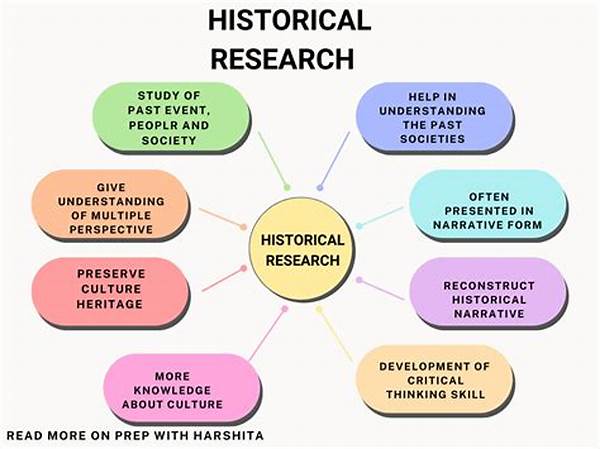Have you ever wondered what it sounds like to step back in time? Imagine pulling back the curtains of history and tuning into the echoes of the past through the crackling voices of early radio. It’s like a time machine, and historians are at the controls. The power of early radio archives in historical research is not just a ticket to nostalgia but a transformative tool that offers unique insights into bygone eras.
Read More : Recommendations For The Latest Auto-tracking Audio-visual Conference Cameras
It’s as if the radio waves of the past are whispering their secrets to us, offering an unfiltered glimpse into the emotions, attitudes, and social dynamics of their times. Visualize the excitement of discovering a hidden story or a lost perspective only revealed through these audio treasures. More than dusty documents or fading photographs, these archives provide a living narrative—a melodious conversation with history itself.
Unlocking the Past: A New Dimension in Historical Analysis
In the dynamic world of historical research, traditional methods are getting a serious upgrade with the introduction of audiovisual sources, especially the early radio archives. These resources bring a new level of depth and richness to the study of history that was once unattainable with mere texts or photographs. Unlike written records that often require interpretation, audio recordings offer an experience closer to the genuine interactions of the past.
Historians can listen to speeches, debates, and broadcasts exactly as they happened, providing insights that are as vivid as they are vital. These recordings capture the tone, emotion, and nuances of speeches in a way that text simply cannot. Imagine hearing Churchill’s wartime broadcasts with the tremor of urgency in his voice or FDR’s fireside chats with their comforting cadence. This level of detail in historical research was once merely a dream!
Bridging Gaps in Understanding
The benefits of audiovisual sources in historical research with early radio archives are manifold. They bridge gaps in understanding that text alone often leaves open. Through sound, researchers can evaluate public sentiment, cultural shifts, and even the subtleties of social attitudes during pivotal moments. This enriches historical narratives and offers a dimension of empathy and engagement that invites today’s audiences to connect on a personal level with the past.
Furthermore, they help fill in the blanks where written documentation falls short. Audio can reveal inflections, pauses, and even off-the-cuff remarks that capture the unguarded moments of history. It’s a digital archeological site, ready to be explored by those willing to dig deep into audio archives to unearth the insights hidden within.
Emotional Resonance and Educational Value
Audiovisual sources also offer compelling educational benefits. They can evoke emotional responses that traditional materials might not. This empathetic connection ensures that audiences—not just historians but students and the general public—remain engaged and interested. By integrating radio archives into their explorations, educators and content creators bring an innovative, more captivating angle to history.
Radio broadcasts capture not just the known facts but the heartbeat of history, resonating with audiences of all ages, making them a powerful teaching tool. Their ability to bring past experiences to life enhances understanding and retention for learners, providing a platform that’s both informative and evocative.
Diving Deeper: Real-World Applications
The application of early radio archives in historical research extends beyond academia. Documentarians, podcast creators, and writers can use these resources to weave rich, authentic narratives that appeal to broad audiences. They provide layers of context and authenticity that enhance storytelling, offering listeners a chance to experience history in stereo rather than mono.
Read More : Audio Visual Learning Media As A Tool For Gamified Classroom Interaction
Engaging Narratives and Expansive Research
In an age where content creation requires both accuracy and engagement, radio archives offer a treasure trove of material. They enhance narratives with authentic voices and contexts, allowing for richer, more expansive research and content development. By incorporating actual audio from historic broadcasts, creators can craft experiences that resonate emotionally and intellectually.
Consider the potential benefits of audiovisual sources in historical research with early radio archives when utilized to bring to life a podcast about the Great Depression or a documentary on World War II. They ensure that audiences aren’t just passive listeners but active participants in the historical journey.
Summarizing Findings: A New Age of Historical Exploration
In conclusion, the benefits of audiovisual sources in historical research with early radio archives are both profound and versatile. They unveil a vivid dimension of history that goes beyond traditional methods—offering authenticity, emotional impact, and enriched narratives. As we continue to digitize and analyze these invaluable resources, they promise to reshape our understanding of history, inviting everyone to listen closely to the stories of yesteryear.
In embracing the echoes of the past, we not only honor the authenticity of history but also enrich our storytelling capabilities, ensuring that future generations can experience these moments as if they were there. Audiovisual archives are more than just historical artifacts—they are portals to a fuller, more engaging understanding of our world and its complex tapestry woven through time and sound.
Opportunities for Future Research
As we continue to explore the vast potential of these archives, their role in educational settings will undoubtedly expand. Future research can explore their impact across different platforms and demographics to better understand how they shape our collective memory and cultural understanding. So, grab those headphones, lean in, and prepare to be transported back in time—because history has never sounded so alive!
